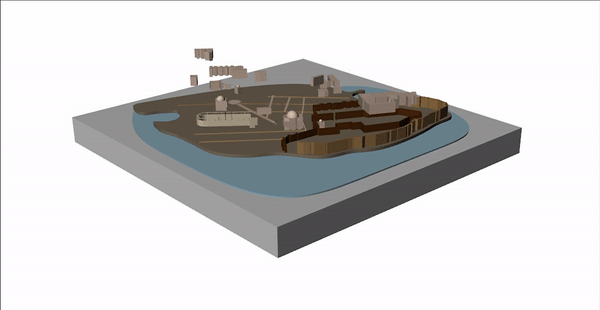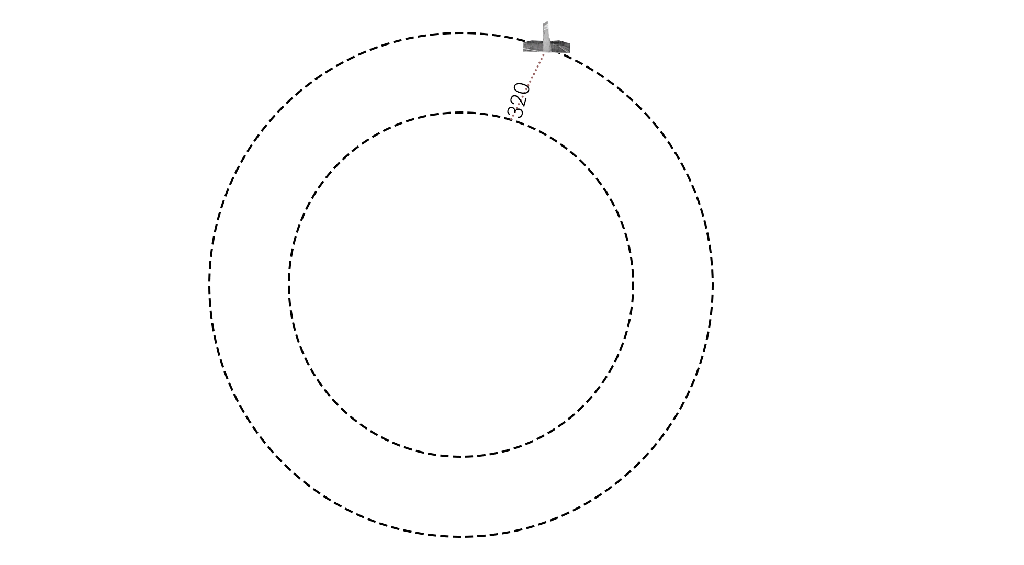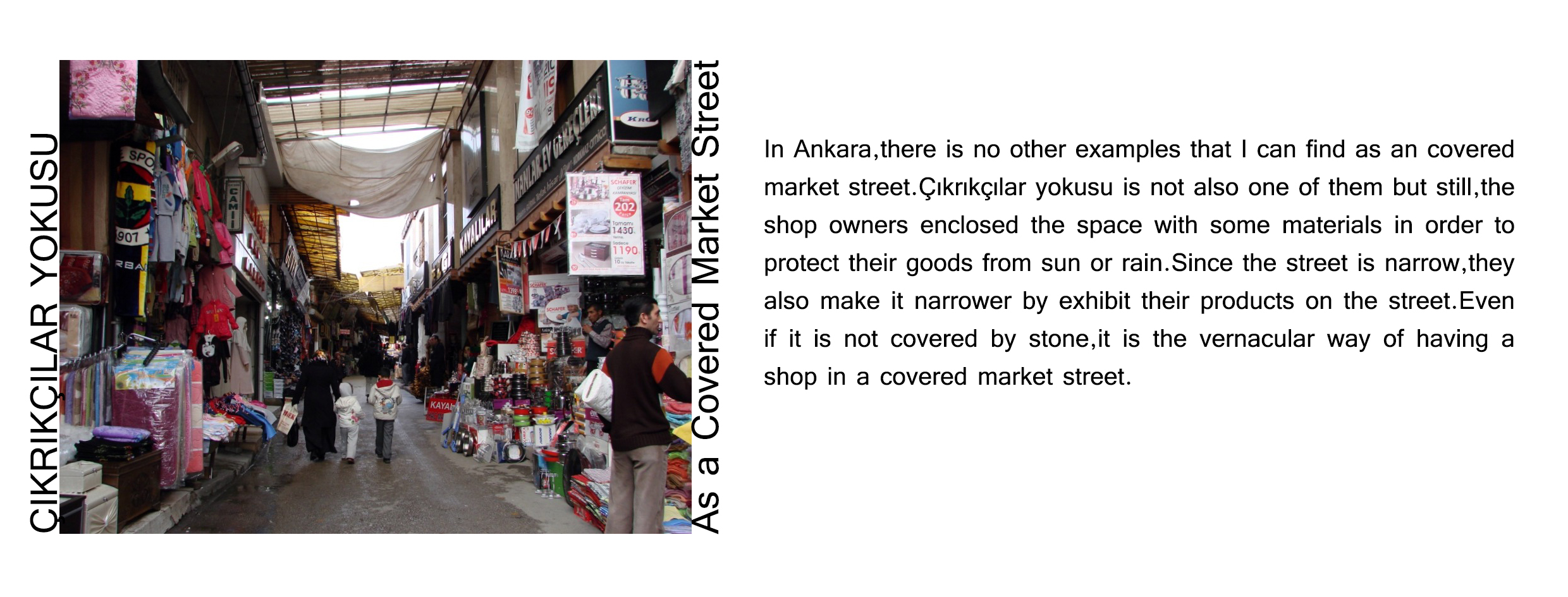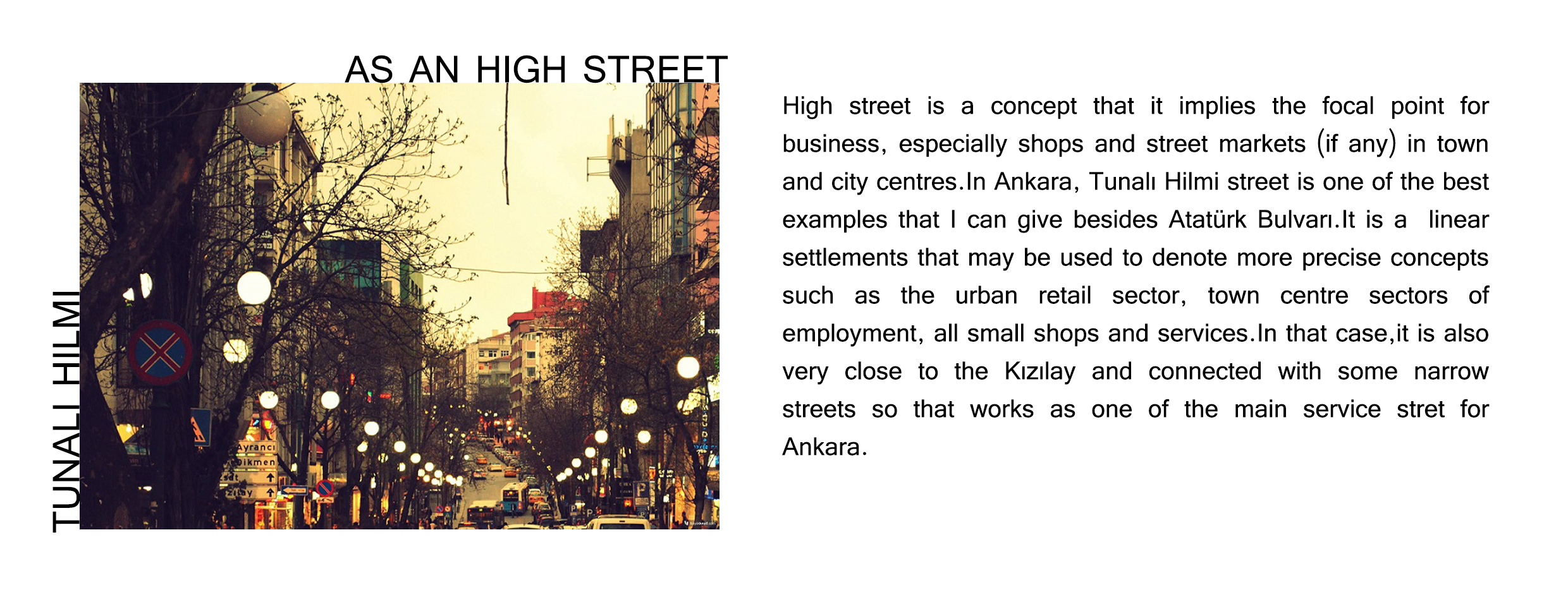
Hipodrom Model



Here is the details from the Arch302 project that we draw for the Building Technology course.
As I was mention before on the other jury posts, this semester’s studio topic is Living Together which is dealing with communal mass housing. The project site is in Çayyolu, Ankara. The important part of the project was to getting together elderly and young people.

This was the group work which we work together with Akça Yılmaz, Begüm Karya Aydaş, and Zeynep Aykan. Since it is group work and online at the same time, there were hard times and good times but I believe that we always show respect to ideas of each other.
The design strategy is to separate spaces private to public as
My space;
Your Space;

Our Space;


This is our site plan where you can also see the bridges that connect your spaces each other. They re-shapes the block with light gap and makes balconies. They also contributes the privacy of the valley which is the core of the system. Valley is a wild atmosphere that we are going ego to eco.

The valley is one of the main ideas that we worked on to create privacy for the my space and balconies since they are on the opposite site of each other.

In this semester,I learned how to work on 3d modelling and how to have a render.So here is some of the renders that worked on.
Since we were very close to the end of my third year, it is time to remember the 301 courses that I took in Greece, the University of Patras. The instructor of the course is Myrto Kiourti.In this project, we were working together with Simay Demirel.

The name of the project was Res-Publica which aims to create a huge public space to bring people together and avoid one of the most significant problems of our day: loneliness. The site was the monumental St. Nicholas Staircase of the Patras since it was one of the symbols of the city, location of it appropriate to gather people.
We decided to design a cultural center that includes music, art, and theatre to make the structure appeal to every person. Also, in order not to spoil the monumentality of the stairs and create an opposite relationship with the fragmented environment, we decided to create a perfect cube. While designing that we also added 3 courtyards starting according to the slope of the stair and referencing from the street of the city.

To attract people’s attention and make them come to the structure we ensured the ring roads were stuck in the building and pass inside of it. Also, roads that overlap at some point in the building create courtyards in the building. This condition creates distortions inside of the building while we can still see the perfect cube in the outside.

It is always possible to enjoy and work together in Erasmus too if you have such a perfect group mate. Love you my best
Each person in the city life can feel themselves outside of the space, alone and desperate. For example, late in the night ,alone in the street can be scared for everybody or think of a bus or subway that you feel that you are insecure and not part of a society, some people looking at your body or judge you etc. With that vision, everybody can imagine but some people know that horrible feeling more than the others such as female and LGBT identities. But why some cities are giving that experience to the citizens more or how it can be decreased by urban design? The main aim of this essay is to discuss how public spaces can be improved to provide gender-neutral experiences. First, I would like to introduce the concept of public space and why its relationship with gender is important. Then, I will continue with some of the aspects of the gender neutral spaces and finally I will propose the pros and cons of it. Public spaces are not static sites, rather, they are animated by physical characteristics, history, location, time of day or week, season, or the presence of other people (Amin, 2013). Public space as such means that we ought to consider several variables when design gender-neutral public spaces. Historically, most of the public spaces have used by male for more than a centuries starting from Greek Agora to British market halls in the 17th century until the end of World War II. Those public spaces were designed according to patriarchal principles were male feel themselves comfortable. For example, hippodrome where only men allowed to join and watch the events and it’s of course affects the spatial design of the hippodrome. Cities shaped around the trade activities and those were always belongs to men and it is a long route that women are not involved to city and only ruled by men, designed for their needs. While the domestic spaces are designed for women. After the 1960’s, Sociologists started to publish some of the earliest research on women and cities. (See Spain, 2014). However, after women were active on the city life and business life, there was no obvious change in urban planning and domestic design. For example when using public transport in London (Safety and Security Survey, 2014) showed that 15% of women had been sexually harassed. Also, the concept of gender has expanded beyond masculine and feminine categories to include LGBT identities so now the fear of violence is a particular concern for LGBTQ communities as well as for women. It is important that all cities should have include gender-neutral spaces is which concept enables all males, females and the LGBTQ community to feel safe and comfortable in their surrounding environments. When it comes to public spaces aim of the gender-neutral zones is decreasing the feeling of fear, judgment, or not belonging for everybody of the community. However most of the research shows that cities are not designed or improved according to gender-neutral understanding.
Architects, Urban Planners and Sociologists have come up with many solutions to make public spaces safer. At this point, I have to separate the ideas into two. Because while one is finding physical solution rather than design solution and applied mostly by the people who are not suffer from the issue of being outlander in your own living areas. Other is neutralize the space according to gender and aiming to make city lovable and livable which is also the main standardization for spatial justice and right to the city.

The most common ideas which most government applied is making space secure include having better street lighting, adding more public space between narrow streets, decrease the number of dead end streets and using more security guard around public spaces adding leisure activities into those public spaces for both genders (Johnston-Zimmerman, 2017). However, research shows that those are just standing as a precaution to protect women from harassment or burglary but not making them a part of the city (Gardner, 1989).Many reports and news in Turkey unfortunately shows that many women are harassed even by the security guard. Because it is a physical solution rather than design solution. It is not directly proportional that women feel themselves comfortable when the space is full of security guard or light enough. Women can still not be the part of the space and it means that there is not enough spatial programs that involve women or LGBT identities to the public life. Although those two approaches have common inside where the gender-neutral zones has to be already safer than a precaution patriarchal public spaces.
The second part of the idea is to add public space to gender-neutral zones or making them one. Authors such as Clara Greed (2008) note that toilets are primarily designed by and for men but that they do not necessarily understand gendered toilet needs. Besides, men have many more toilet facilities, including usage of the street while it is hard for women to find a toilet in a street well design and clean enough. Even that change in public space, i.e. allowing women to access clean WC in public spaces, is a change in their life. Although it is not enough, women can feel that they are now at least have equal chance to find a public clean toilet around their neighborhood. In the design of the city, urban planners think that there is a designed space for the women too which it seems safe and include activity for female but problematic part where women are bullying is mostly the part that untouched by the architects. Such as abandoned lots between housing developments and highways, empty spaces between industrial zones and central business districts, alleyways, street corners, and spaces between buildings are usually ignored in the planning and design process. These areas, which connect formal and informal spaces, are important parts of public space and should be considered in planning practice in order to ensure that all parts of the city are safe for women and girls (Safe Women Project, 1998)

Another issue is how to make sense of queer spaces. Queer spaces have to be accepted as part of the urban fabric of the city to ensure queer population is a part of the city streets and in public facilities. Just because ‘LGBTs have been active in reconfiguring urban space, rejecting the suburban model of nuclear families and single-family detached housing for the mixed-use’ (Spain, 2014), they are the part of the improvisation of the space as much as women and other minorities. Although women are not minority they are half of the society, patriarchal design of the public spaces creating that idea. Much of the research shows that people who experience queer spaces such as bars state that these places are very safe, and mostly they feel they belong there. Particular reason for that is LGBT members experience the risk of harassment a lot so when they have their own fun space, they are very much respectful about the personal spaces of others. This is particularly true for both the female and the Trans population. An older Trans female who experience the harder times where there is no special bar for queer said, “Gay bars are incredibly comfortable while reflected on the level of safety, acceptance, and human connection that queer bars (Nusser, S. and Anacker, B, 2012). I can say that since they are accepting all the gender without judging. They can be the very starting point of the neutralizing public spaces and has a huge role to break homophobia. Besides, if we had a chance to merge queer spaces with other example of gender neutral places such as feminist bookstores, self-help clinics, and domestic violence shelters, that would increase the feeling of acceptance both for female and LGBT members and decrease the homophobic acts that LGBT’s bullying by women. What I mean with merge is having same level of acceptance in all medium of urban gender neutral spaces so that now space for women also work for LGBT members too. By that act of merging number of the queer space increase and at the same time it is shared with everybody who feel themselves part of the feminism movement.
It is obvious that the spaces belong to women are seeming safer than the spaces such as game rooms, sports bars, or kıraathaneler which we can name as ‘man cave’ where the act of masculinity produced. Although none of them has clear labels that no women allowed, still the feeling beyond is very similar to that label for women. In that case, the city at night is the same for women where they feel insecure may be more than hanging in a game room alone. (Solymosi, Bowers and Fujiyama (2015) developed a mobile phone app where fear of crime was reported within four different periods, including morning and evening commutes, daytime, and nighttime. Findings showed nuanced “fear of crime” maps and were able to point to some urban interventions. For example, with the help of maps as much as the police, urban planners can develop designs accordingly since the data of the problem is very much clear. For the redesign of one public space to a gender-neutral zone, we should also control the level of security in that space and ask that whether design strategy works in the real-life and make women and LGBT identities a part of the city. In that control, such an application that I mention on top can work very well because now we will have a chance to measure the feeling of people to intervene in the gender-neutral zone again and again until it becomes safe. With that kind of acts they are actually become the designers of the public spaces. Since there is no more option to check, surveys and applications are the best to help designers.
Other important issue is that the regulation of public transportation. Safer city transportation allows women and girls to move around the city freely, without fear because women experience the transportation different than men even if they use it same time range of the day. Seventy-five per cent of bus journeys are undertaken by women and only thirty per cent of women have access to the use of a car during the daytime. What must be recognized is that these trips also have the potential to be less safe since many women must walk through, or wait in, unsafe areas in order to access public transit. Moreover, at odd times of day and in isolated places, public transit may be unreliable (by necessity many women must travel through the city very early in the morning and late at night) (Peters, 2002) In the absence of the security, women forced themselves to wear appropriate for the public transportation or travelling with group, ignoring sexual harassment or carrying security belongings such as tear gas or pins but it is not the act that prevent by individual acts since the transportation is the connection to the public spaces we cannot talk safe, gender equal public spaces or cities. In order to create a safer transportation system, those five article should applied (The World Bank. 2006)
Because as we all know it is again not a problem that the government can solve phsically such as hidden cameras or security guards.It needs to solved by radical changes.
For changing the patriarchal rules in the urban concept we have to know that there is a gender gap in urbanism. If you have the same people around the table who have been trying to solve the same challenges for 50 years, nothing will change” says Lynn Ross (2016). For example, 10 of 6 participants are male that join the urban planning major conferences in 2017 or among U.S. cities with populations of over 30,000, only 20 percent of mayors are women (Zimmerman, 2017). That is just one reason of why it is very hard to intervene to design of the city since authority is male and not experience the situation of women and LGBT members everyday life. So it is explaining the problem clearly, the method of improvisation to have gender-neutral public spaces is neither qualified nor enough for solving the problem of women or LGBT identities in the city. Women in cities around the world have to be coming together to share their experiences. ‘To strengthen the case for making this the central issue that can take our cities to the next level of not only livability, but lovability’ (Zimmerman, 2017).I believe that it is women’s duty to all gender identities, ages and creating a concept of people respecting each other without judgment because they are knowing how it feels to be alone in the narrow street late at night not the men.
Finally, I can say that the best option to neutralize the space is to ask city dwellers and change according to them. Since the LGBT’s and women are the one who suffer from the situation we have to remind that they are the part of the city and if they work together to break the patriarchal rules for the design of the public spaces. Feeling belong to the city for minorities is not about street lighting or adding protection wall, there is a way more design tools for us to apply and change the shape of the city for them. I believe that women and LGBT majors or urban planners exist and now it’s their time to take control and change the cities to better ones and this is only possible when they start to encourage their ideas. I want to end my essay with some words from the first female mayor of Barcelona Ada Colau 2015) (Zimmerman, 2017): ‘To me, this is about starting a movement around truly women-led cities from all aspects of urbanism: from policy to community development, street artists to architects, and all aspects of urban planning/design/research and beyond. For every woman, regardless of privilege. This is about achieving what we have never had the opportunity to impact before: the design and management of our cities, by and for our fellow women.’
Here are some of the posters that I work on in the course of Arch484.




Since I don’t have a chance to share what I worked on because I was in Erasmus now its time to share them. In the Urban design course, we work together with Simay Demirel and we tried to improve the industrial and historical site in Eleonas, Athens, Greece. While working on a 302 project, it was nice to remember the urban design approach from the last semester.



In the third prejury, as we continue to work on the combinations on my space and your space while depending on the grid. Jury members find out that although the ideas are consisting and exciting the usage of the grid is limited to plan approach and also push us some unsolved difficult problems so they stated that we have to use the grid in a flexible manner and bridges and the approach to the periphery of the site and design the openings and balconies carefully, while the valley inside becomes more important and rich.
For the Arch372 course, we were assigned to design a sustainable house in order to learn the technical approach to sustainability. It was a bit hard to research the technology that improves itself to fast.Here is my proposal.
